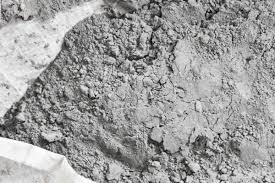- Call us!
- +86 531 8887 6213
- cathy@winner-psa.com
The fineness, specific surface area, and particle gradation of cement greatly affect the quality of cement products. Among them, particle gradation has a great influence on the cement production process, from the grinding of raw materials to the calcination of raw materials, the grinding of clinker and mixed materials, and the delivery of finished cement products. Controlling the particle gradation of cement can also greatly reduce energy consumption and production costs. And the grinding efficiency of the cement mill is also closely related to the particle size of the grinding materials. Improving the grinding efficiency of the cement mill, and thereby increasing the hourly output of the cement mill, is also an issue that cement production companies pay close attention to.

Cement particle gradation is a direct factor affecting cement strength. Particles in cement with a particle size below 1 μm will be completely hydrated during mixing, which will not contribute to the strength and will increase the water demand during pouring. The high particle content of 1-3μm will increase the strength in 3 days, and the water demand will also increase. The particle content of 1-32μm determines the 28-day strength. Since the particle content of 1-3μm should not be too high, the higher the particle content of 3-32μm, the better. If the strength index has a greater margin, the amount of mixed material can be increased. . The particle content of 32-65μm contributes to the strength, but the contribution rate is not high. Particles above 65 μm do not contribute to strength and only serve as a skeleton.
There are generally several methods for testing particle size distribution: 1. Sieving method; 2. Sedimentation method; 3. Resistance method; 4. Microscopic image method; 5. Laser scattering method. In the measurement of cement particle gradation, sieving method and laser scattering method are the most widely used methods. However, for particles with a particle size less than 60 μm, the resolving power of the screening method cannot meet the requirements. The laser scattering method is recognized by the majority of cement production companies for its simple and fast operation and accurate measurement. The laser scattering method is a monochromatic coherent beam emitted by a light source. After passing through a beam expander and a Fourier lens, it is irradiated on the sample particles, causing scattering. The scattered light is irradiated on a series of photodetectors, and the energy distribution of the scattered light is related to The particle size distribution is directly related. According to the inversion operation, the particle size distribution of the measured sample can be obtained. Domestic laser particle size analyzer manufacturers represented by Jinan Winner and others are accepted by more cement production companies.
In the cement production process, the traditional correlation between fineness and specific surface area and cement performance is not ideal, and particle gradation has attracted more and more attention from cement manufacturers. Fineness can only effectively reflect the percentage of particles above 80 μm. Although this data can show to a certain extent that the higher the effective particle content, the stronger the cement strength will be. However, for particles with a content of more than 90% and a particle size less than 80 μm, which are directly related to the performance of cement, the specific particle size distribution It is not clear and it is impossible to understand the performance of cement in detail. Specific surface area is a reflection of the average particle size of particles. The smaller the particle size, the larger the specific surface area. Therefore, the specific surface area mainly reflects the content of fine particles, that is, it mainly represents the 3-day strength, and has little correlation with the 28-day strength of cement, with a correlation coefficient of only 0.57.The use of dry laser particle size analyzer to test cement particle gradation can take into account both fineness and specific surface area, and can also describe the particle size distribution in detail, which is more instructive for cement quality control. And in the test, the laser particle size analyzer has the advantages of large testing range, high resolution, fast testing speed, etc., and is more suitable for the application of cement production enterprises in cement production process engineering. As cement production companies have higher and higher requirements for product quality, particle gradation has received more and more attention from manufacturers, and dry laser particle size analyzers have gradually become popular in cement production.
We recommend the dry laser particle sizer Winner3003 to test the particle size distribution of cement powder.
Copyright © Jinan Winner Particle Instrument Stock Co., Ltd. All Rights Reserved | Sitemap
Keywords:
Laser Particle Size Analyzer Spray Particle Size Analyzer Particle Image System Online Particle Size Analyzer Particle Size Analyzer particle size distribution particle size analyzer manufacturer Laser diffraction particle size analyzer particle size malvern particle size analyzer